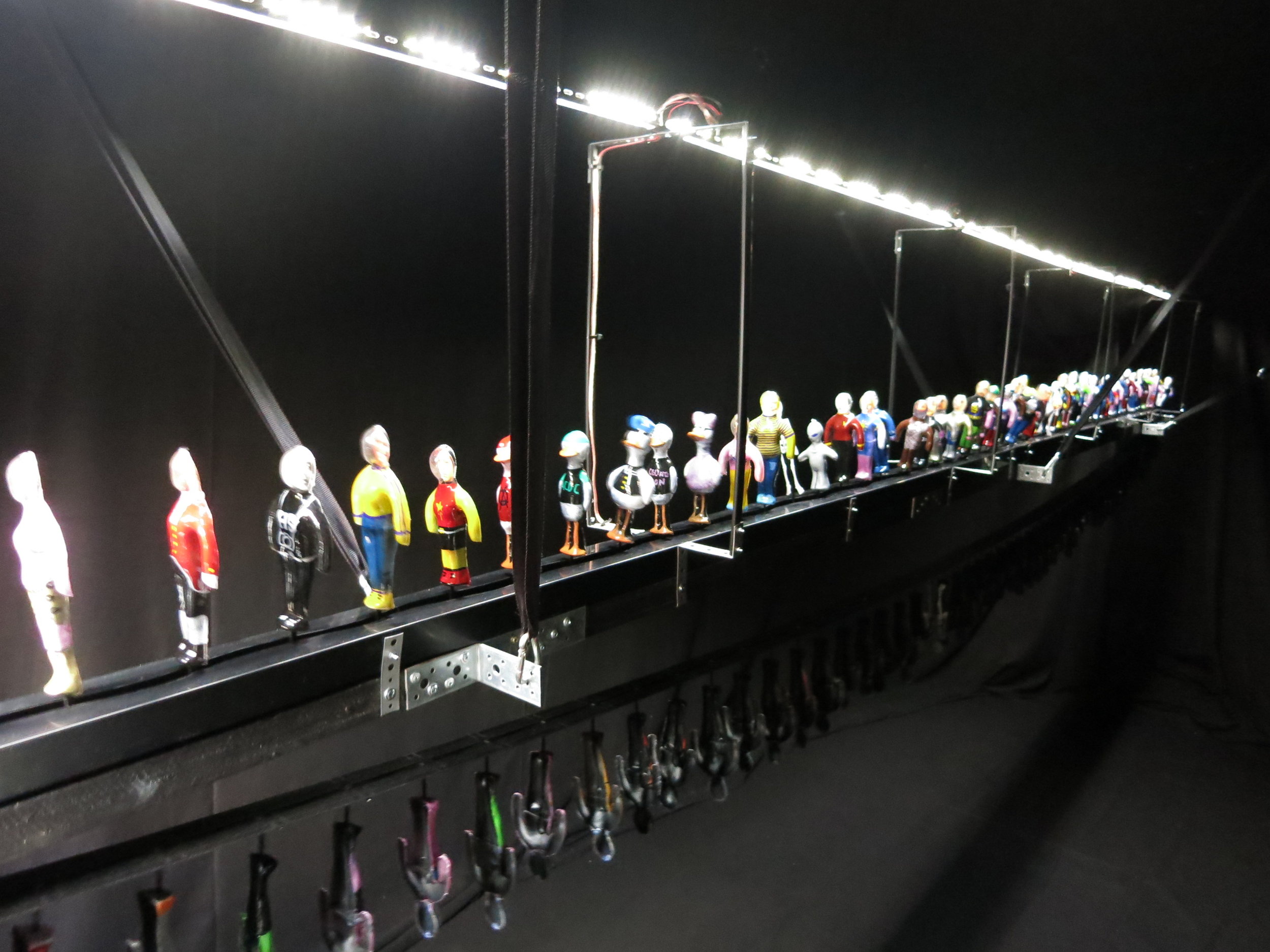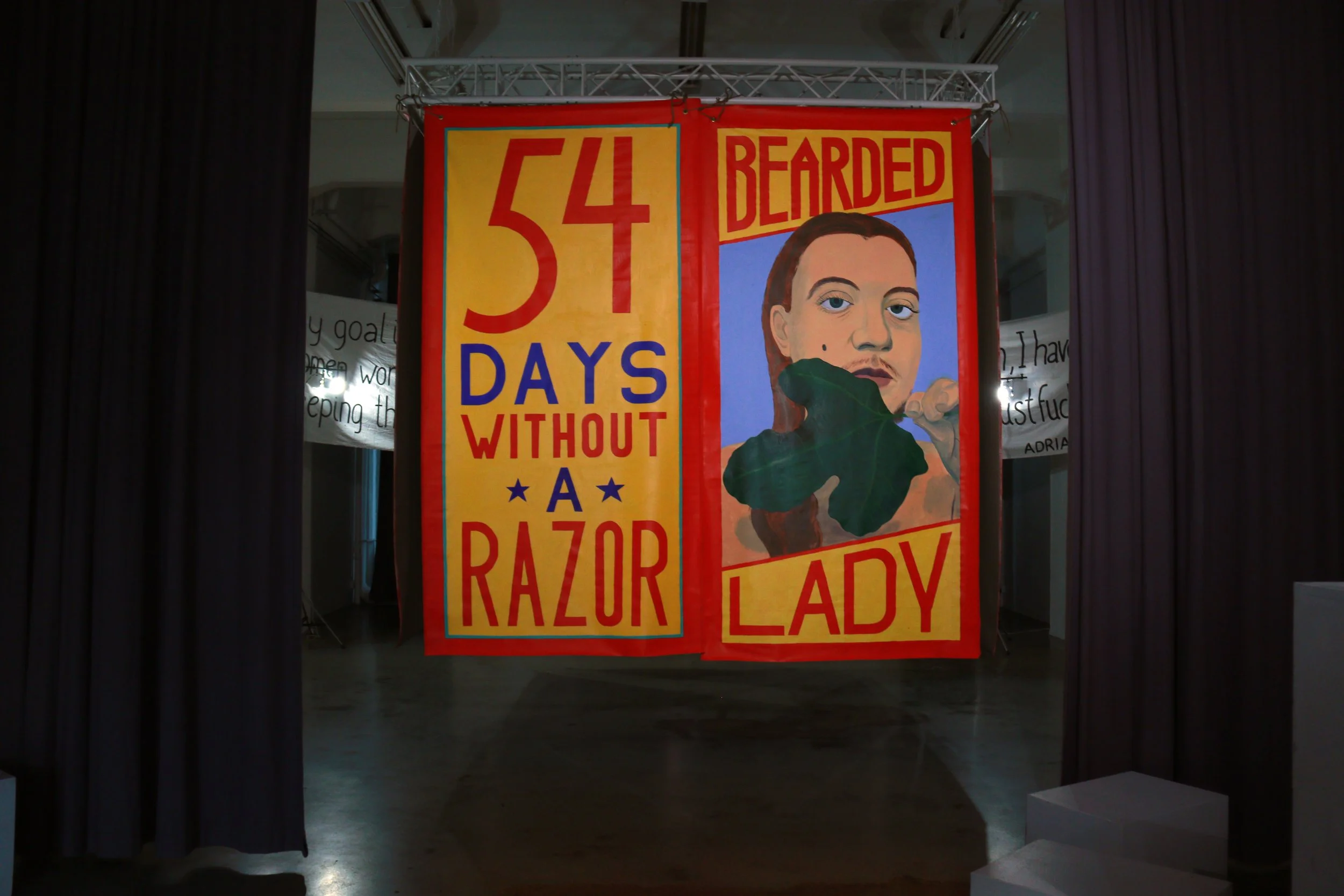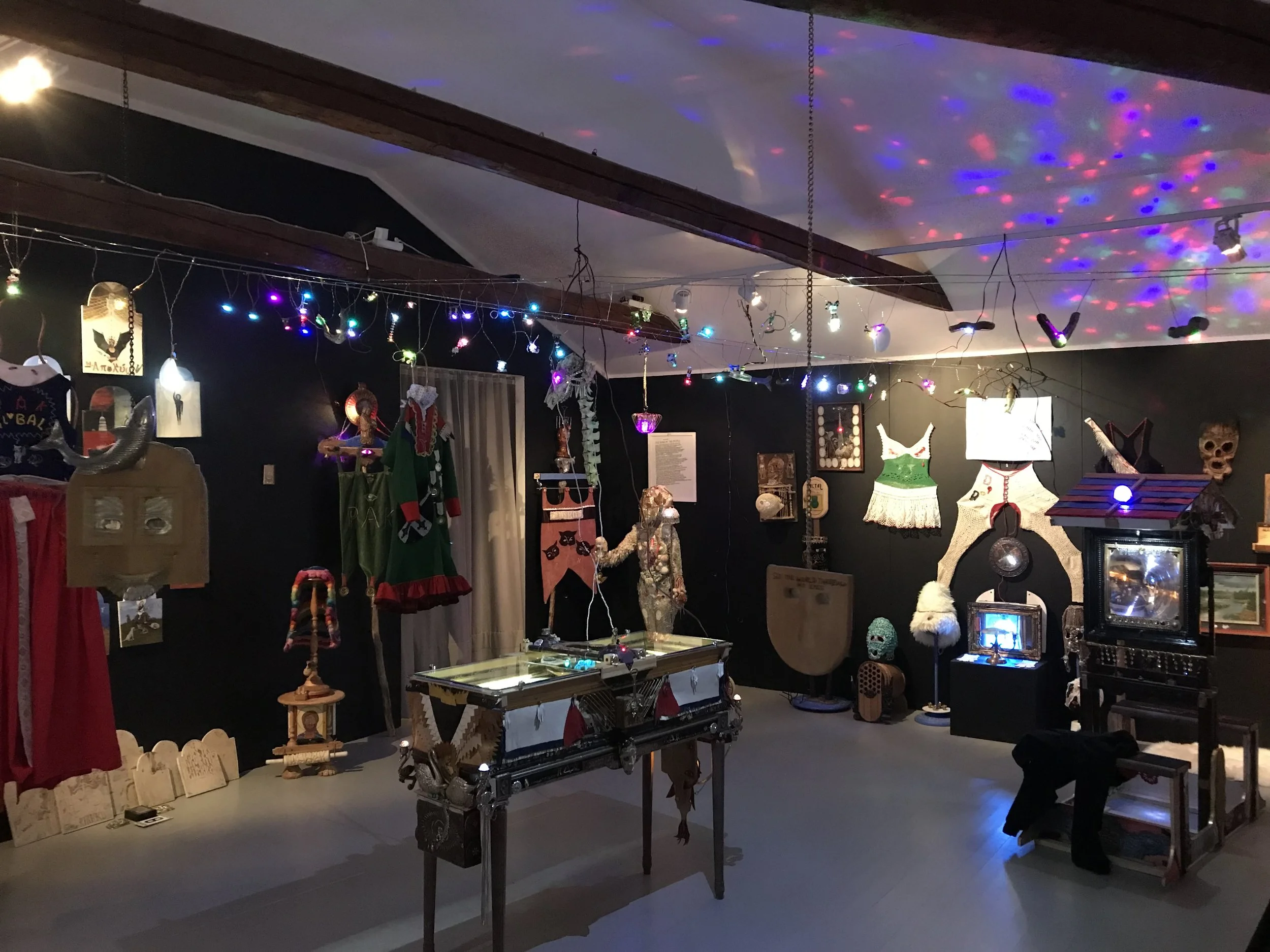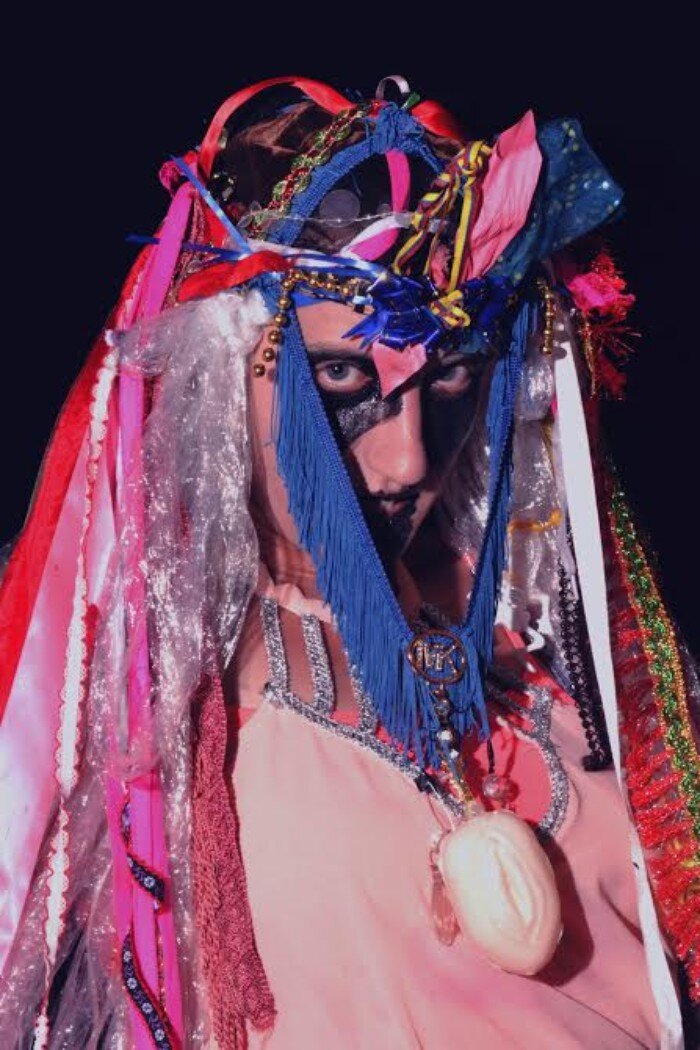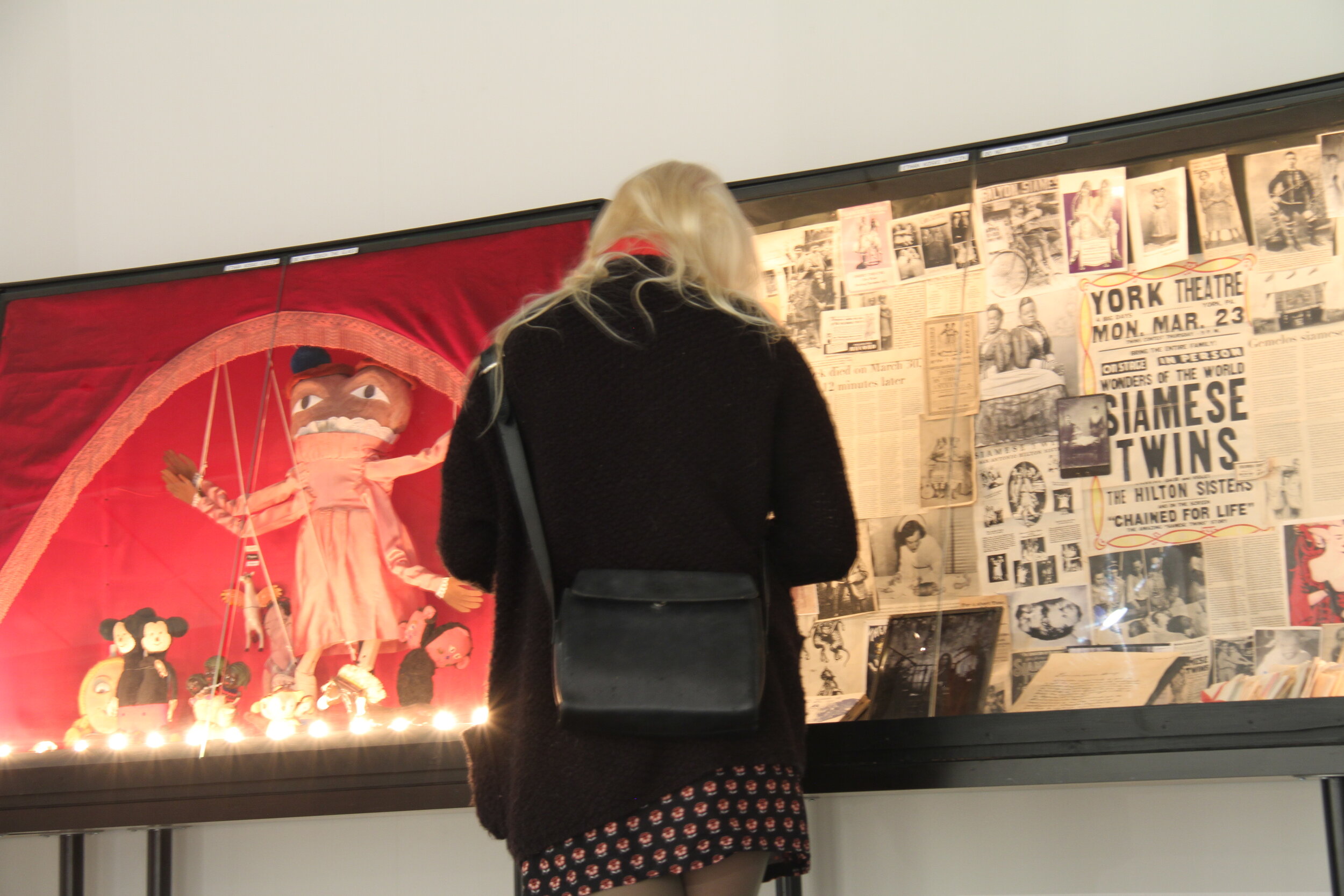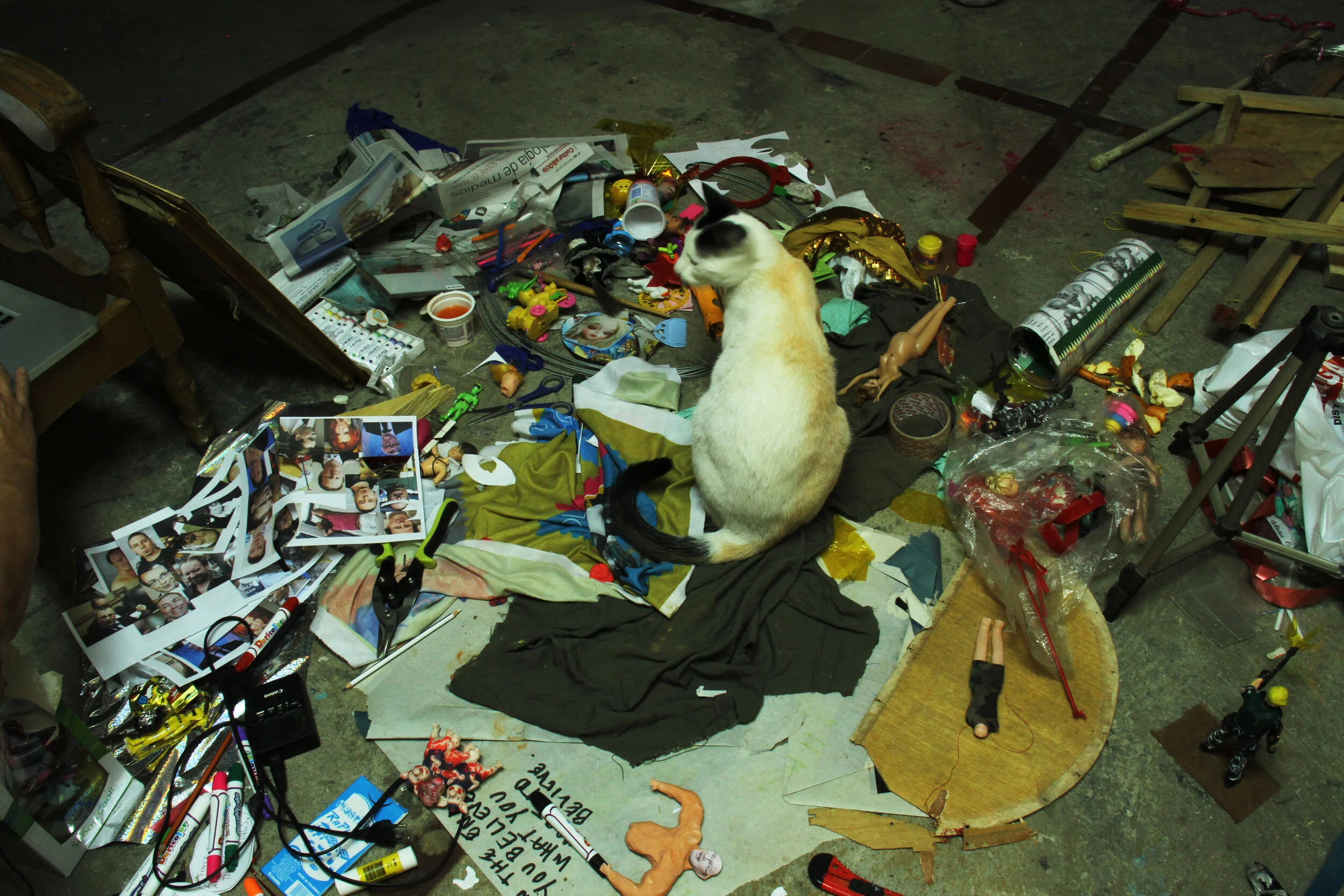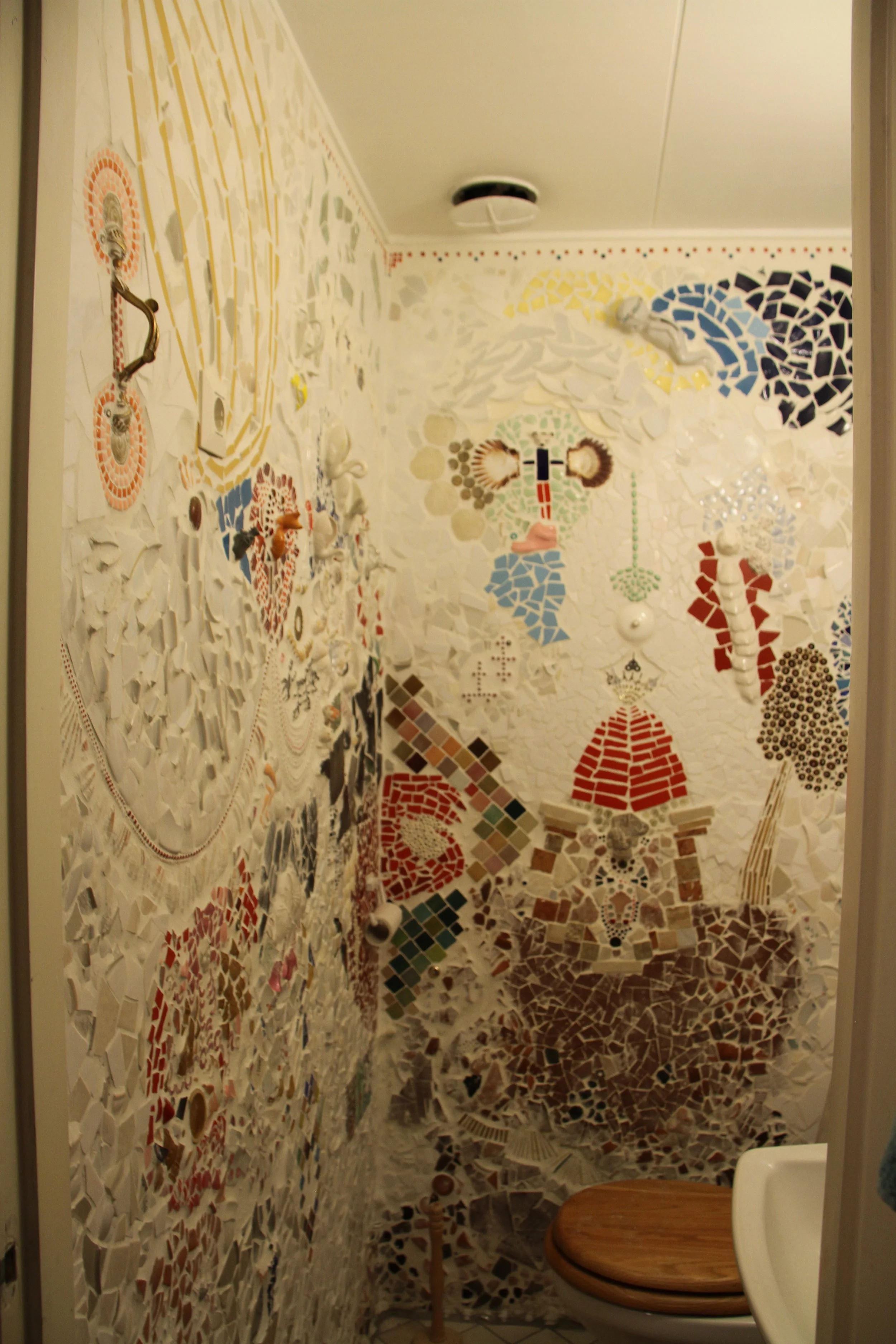installation (sculpture) physical museum of fictional person / 2013
GER:
Maria Theresa Alvarez Museum
Die Venezuelerin Maria Theresa Alvarez gebar im Jahre 1894 in San Juan de los Morros Siamese Drillinge. Der Drilling hatte keine Füsse, weil der Geburtsarzt um das Geburt zu ermöglichen sie amputiert hatte. Er nahm an, dass es sich von normalen Zwillingen handelte. Als er bemerkte, dass der Drillingsfötus an ihren Schädeln zusammengewachsen war, hat er eine damals sehr gefährliche Kaiserschnittoperation ausgeführt. Die Operation wäre beinahe zum Tode der Maria Theresa geworden; sie war danach wegen mehreren Komplikationen gezwungen 4 Monate und 5 Tage im Krankenhaus zu bleiben. Während dieser Zeit hat sie mehrmals einen Traum gesehen, in der die Jungfrau Maria in ihr Zimmer kam und sie eine weisse Lilie überreichte, die, als sie auf der Hand der Maria Theresia landete, sich zu Tränen umwandelte. Diesen Traum interpretiert sie als Zeichen, dass sie die Aufgabe hatte, sich um ihr Drillingskind zu kümmern. Gleich als sie von der Operation erwachte, forderte sie ihr Kind behalten zu dürfen, und als der Arzt ihr dass verweigerte, hat sie einen Hungerstreik angefangen. Nach acht Tagen hat man das Kind zu seiner von Operation und Hunger geschwächten Mutter auf dem Nachttisch gelegt. Maria Theresia hat versucht für ihr Drillingskind eine ordnungsgerechte Taufe zu organisieren, aber der Priester har es verweigert den Drillingsfötus zu gesegnen und geraten nur besser eine Beerdigung zu anzuordnen. Aus dieser Ursache hat Maria Theresia die Kirche verlassen und ist zum Eremitin geworden. Sie hat ihren Drillingsfötus den Namen Tomasa-Corazón-Dolores Alvarez gegeben und den Rest ihres Lebens Hilfsmittel, Kleidung und Spielzachen zu machen gewidmet. Sie hat sogar Wiegenlieder für ihr Kind komponiert. Bis zu ihrem Tod war sie überzeugt, dass Tomasa-Corazón-Dolores Alvarez überlebt hätte, wenn der Arzt Maria Theresia gleich operiert hätte. Sie hat mehrmals Anklage gegen den Arzt wegen des Todes ihres Kindes erhoben. Man hat aber niemals diese Anklage ernst genommen und auch niemals einen Gerichtsprozess geführt, weil der Arzt die Meinung war, dass das Kind ungefähr zwei Wochen Tod bevor des Geburts im Mutterleib gewesen war. Ein Grossteil der Sachen der Maria Theresa ist im Brand in 1929 zerstört geworden. Nach dem Verlust fühlte sie sich verpflichtet um für zwei Jahre in ihre lebende Kinder Juanita und Lucía zu konzentrieren. Im Mai 1931 wurde ihr Mann Alejo Alvarez von einem Gewittersturm fallenden Baum erschlagen. Dass hat Maria Theresa interpretiert als Straffe dafür, dass sie die Auftrag der Jungfrau Maria vernachlässigt hätte, und gleich nach der Beerdigung von Alejo Alvarez begann sie fieberhaft ein Zimmer für ihr Drillingskind in die dritte Etage des neuen Familienhauses einzurichten. Maria Theresa konnte Monate in dem Zimmer eingesperrt verbringen.
Maria Theresa Alvarez ist in 1951 an Bauchspeicheldrüsenkrebs nur Wochen nach ihrer Diagnose verstorben. Das letzte Objekt die sie für ihr Drillingskind machte war ein von Kemaesit geschnittener Grabstein. Der Stein war von Alvarez aus einer Pilgerfahrt in 1949 von Chile mitgebracht. Kemaesit ist ein extrem hartes und schwer zu bearbeitendes Mineral, das die auf Gebirgsgebiete Chiles lebende Pamus-indianer als den Stein nennen, von denen die Götter ihre Hauser bauen. Die Bearbeitung des Grabsteines hat Alvarez beinahe zwei Jahre gedauert.
Translation by: Arno lehtonen
ENG:
Maria Theresa Alvarez of San Juan de los Morros, Venezuela, gave birth to conjoined triplets in 1894. The children were born without legs as the doctor in charge of childbirth assumed the triplets were regular twins of which one fetus was dead and started to cut the dead fetus to make childbirth possible. Upon noticing the joint skulls of the triplets, an emergency Caesarean section was performed which at the era was a highly dangerous operation. This almost cost Maria Theresa Alvarez her life, and due to several complications she remained at the hospital for over 4 months.
It was during this period that she saw a recurring dream in which the Holy Virgin entered her room in person and offered her a white lily. The flower landed on her hand and turned into a stream of tears. Maria Theresa Alvarez interpreted the dream as a sign that compelled her to care for the triplets. When she awoke after another operation, she demanded to be allowed to keep her children. When the doctor refused, she went on a hunger strike. After eight days of not eating or drinking, she got her way, and the triplets were brought beside her nightstand.
Maria Theresa wanted to have a proper baptism for the triplets, but the local priest refused and advised her to organize a funeral instead. This incident led her to eventually resign from the church and become a hermit. Maria Theresa named the triplet-fetus Tomasa-Corazón-Dolores Alvarez, and the rest of her life she dedicated to the making of toys, clothes and aids for the deceased children; she even composed lullabies and music for the children to play. She remained convinced that her children would have survived if the doctor had performed the Caesarean section immediately. She pressed legal charges against the hospital and doctor, but the case never reached trial. The doctor claimed that the fetus had been dead for at least two weeks before birth.
Most of the items created for Tomasa-Corazón-Dolores were destroyed in a fire in 1929. This incident made Maria Theresa concentrate on her two other older daughters, Juanita and Lucia, for the next two years, until her husband died in a thunderstorm after being hit by a falling tree. Maria Theresa considered this to be punishment for having ignored the task that the Holy Virgin had given her, and soon after her husband’s death she started decorating a room for the triplets.
Maria Theresa Alvarez died in 1951 mere weeks after having received a diagnosis of pancreatic cancer. The last item she made for the triplets was a tombstone modelled from chemaesite, an extremely hard mineral revered by the mountain-dwelling Pamus Indians of Chile, who call it «the stone the gods use for their houses». It took two years to make this tombstone.
The Museum of Maria Theresa Alvarez was founded in 1978 by Azucena Ramos, daughter of Maria Theresa’s daughter Juanita. At first the museum operated at the family’s old house, but financial difficulties forced it to close already in 1981. The family donated the collection to the Museo Panorámico de San Juan de los Morros, where it has been exhibited continuously to the present day. The preserved fetus of Tomasa-Corazón-Dolores is also on display, but due to transportation difficulties it is not included in the museum’s international exhibits.







